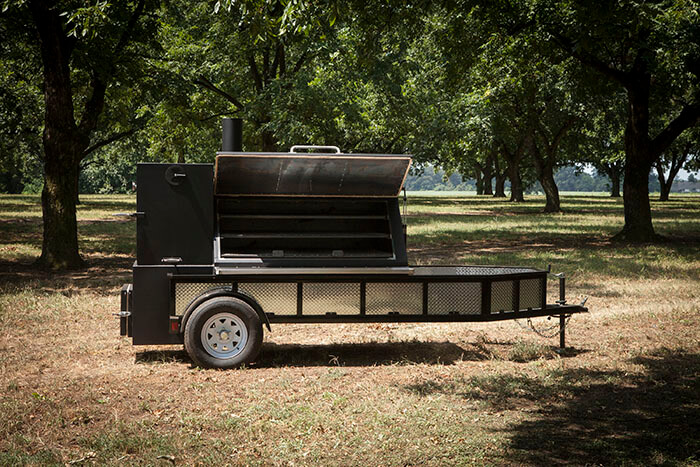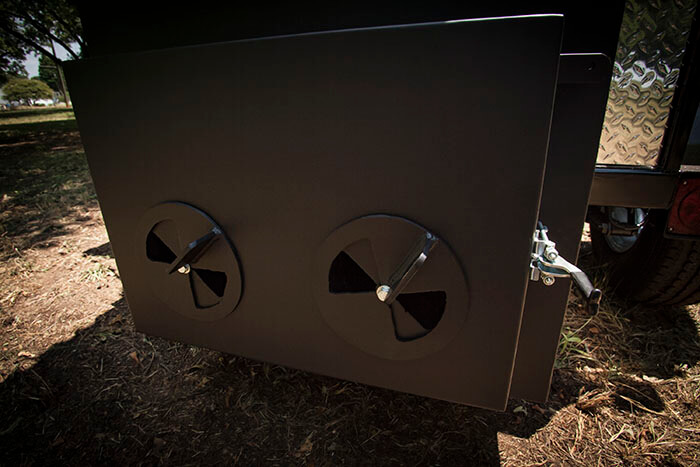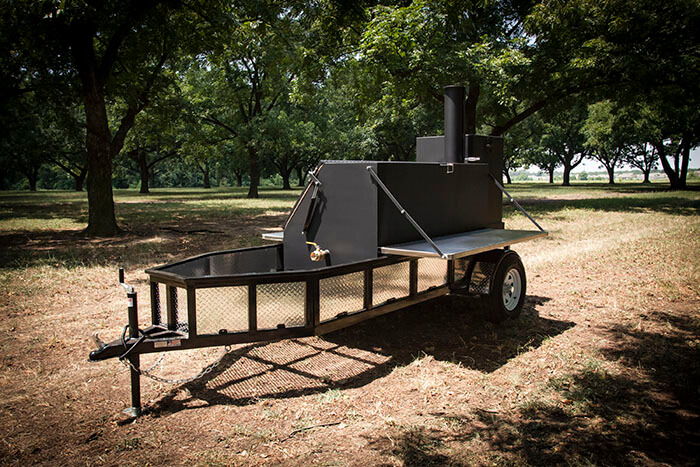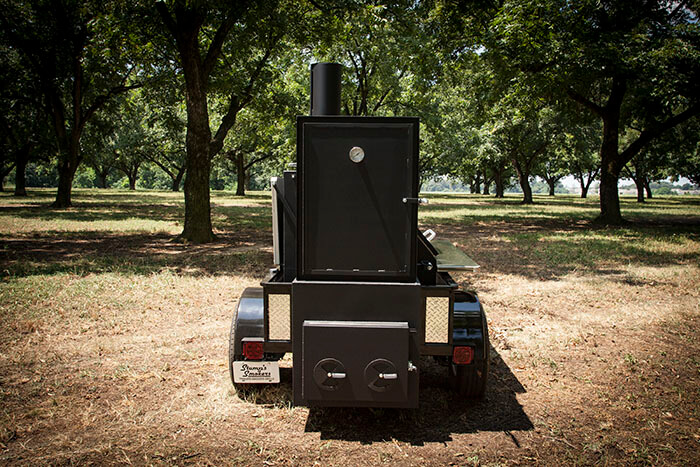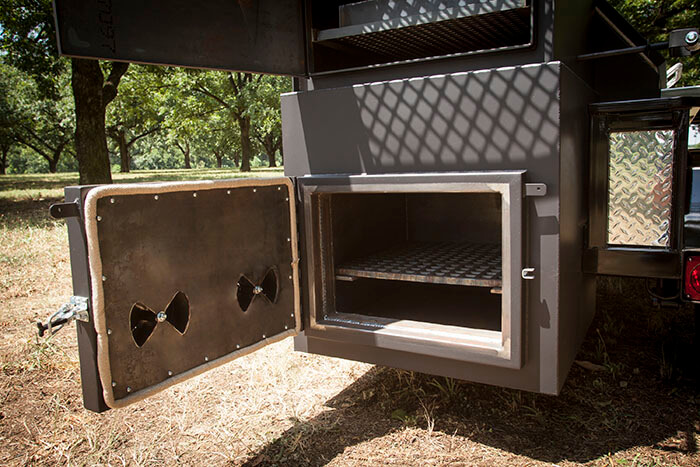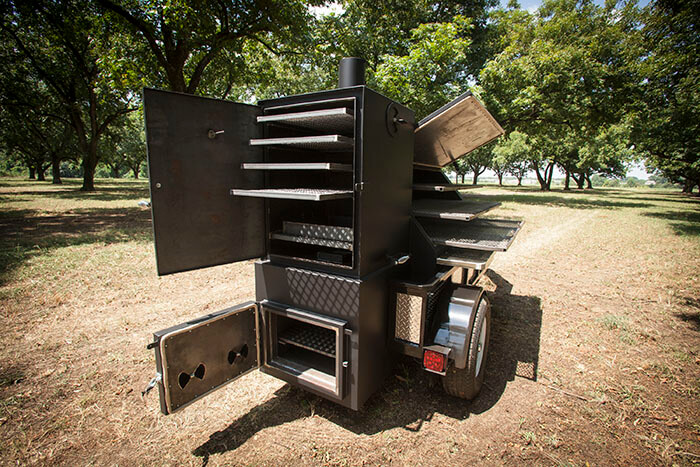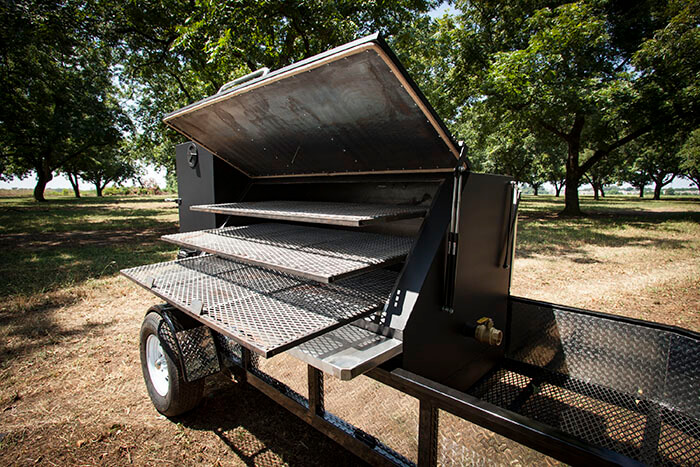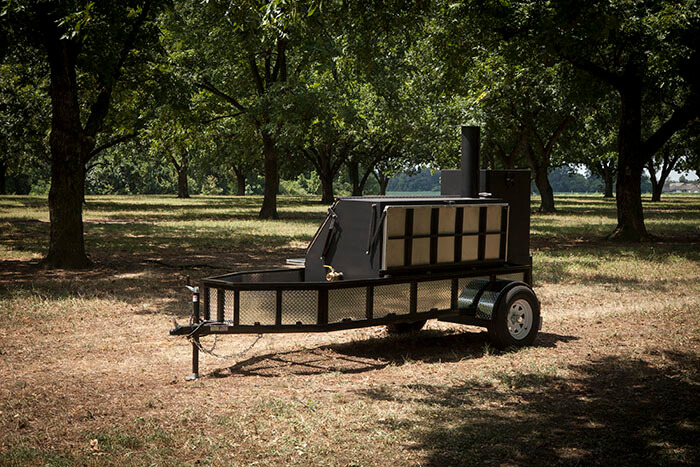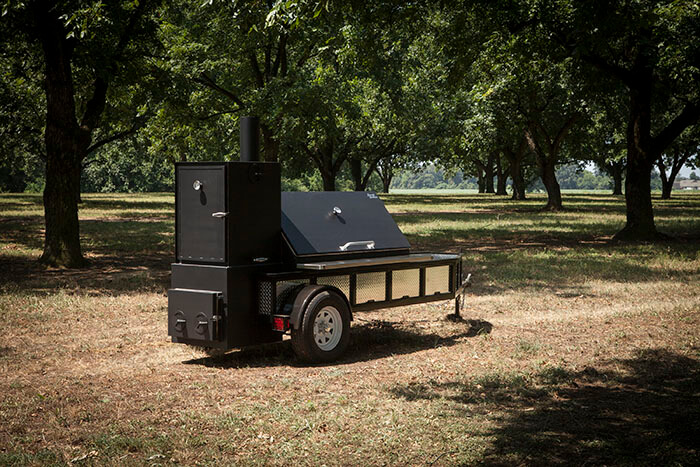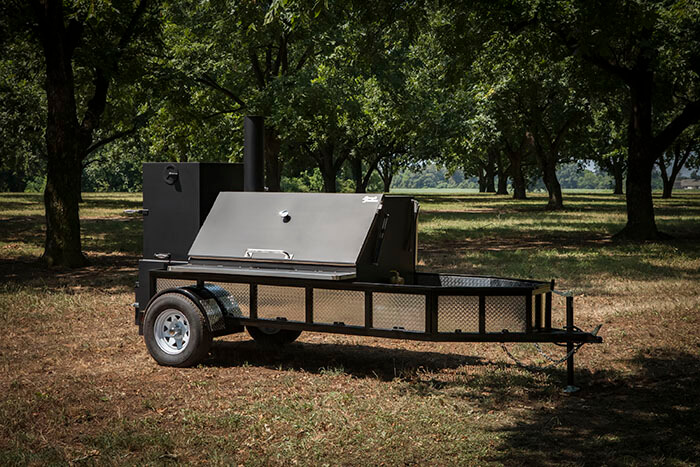REVERSE FLOW 6X4 PREMIUM EDITION
Our largest version of the Reverse Flow models! This unit has the capacity for food storage and to cook for the large Caterer or the large backyard party cook. Like the other models of our Reverse Flow Smokers this unit is ideal for the cook who want to cook on a large scale.
BASE PRICE **Call for Price**
REVERSE FLOW 6X4 PREMIUM EDITION SPECIFICATIONS
| Overall Dimensions | 59 1/2″ H X 84″W X 48″D |
| Material | 3/16″ Metal |
| Overall Weight | 4500 lbs |
| Charcoal/Wood Qty | 30 lbs |
| Bottom Rack Size | 64? W x 47? D |
| Middle Rack Size | 64? W x 41? D |
| Top Rack Size | 64? W x 35? D |
| Rack Spacing | 6″ apart |
| # of Rack Runners | 3 |
| # of Rack | 3 |
| Color | Black |
| Standard Features | Insulated Single Cook Chamber Door Reverse-Flow Design Drip Pan with Built in drain Heavy Duty Charcoal/Wood Basket 6 ft. Cooking Shelf |
REVERSE FLOW 6X4 PREMIUM EDITION TRAILER SPECIFICATIONS
| Overall Dimensions | 6’W X 10’L Single Axle Trailer |
| Material | 3/16″ Thick tube framing build “Stump Tuff” |
| Flooring | 1/8″ Thick expanded metal flooring |
| Fenders | Single Wheel steel fender w/skirt |
| Skirt Walls | 1/8″ Thick Aluminum Tread Plate |
| Axle Type | 5k Dexter Tor-flex |
| Coupler | 2″ Bulldog Coupler |
| Jack | Manual jack w/sand foot |
| Trailer Lighting | LED |
| Tire and Wheels | (2) 15″ Trailer Radials w/white spoke rim |
| Color | Black |
| Standard Features | Wood Storage Area Safety Chains |
OPTIONAL ACCESSORIES
| ATP Skirted Fenders | $110.00 |
| ATP Tandem Skirted Teardrop Fenders | $230.00 |
| Steel Tandem Teardrop Fenders | $300.00 |
| Aluminum Star Wheel Package (2) EA | $425.00 |
| Tongue Mounted Aluminum Storage Box | $375.00 |
ORDER THIS COOKER

FREQUENTLY ASKED QUESTIONS
The amount of “fire” is controlled by the amount of oxygen that is allowed in from the adjustable air dampers on front of the firebox. In this type setup the fire basket-full of fuel can all ignite at one time because oxygen is more prevalent in this type setup. So the burning area of fuel is of greater proportion in fire basket. At the rear of the firebox there is a opening that allows the heat/smoke to transfer from the firebox into the cook chamber.
So by controlling the amount of oxygen that is fed in, we can control the amount of “fire” inside the firebox and the temp and airflow as it moves through the cook chamber. Allowing the natural draft of the cooker to move the oxygen in will allow the temp to rise faster (helping to recover the heat in the cook chamber after the door has been opened). Letting it recover naturally through the air dampers is ALWAYS a better judgment than by leaving the door open. It takes a little longer but the control of the burn is more precise and will not allow a fire to get too hot.|
The heat/smoke moves through the cook chamber in a Reverse Flow Smoker much faster, therefore the cook chamber tends to be a drier environment thus lending for a lower and slower approach to create a nice moist cooking environment that doesn’t tend to cause meat to dry out as it is cooking.
Wood selection is a matter of the Cook’s palette. Therefore, we have included some basic guidelines for selection. A wood that is going to be used should be either fruit or nut bearing. The most prevalent smoking woods include oak, hickory, pecan, peach, apple, cherry, and mesquite. The fruit woods produce a mild flavor with a slightly sweet finish. The oaks and other hardwoods produce a heartier smoke flavor and pecan can influence some meats with a hint of sweet. Flavor wood will also influence the color of the meat. Some pit-masters like to mix cherry and pecan which produces a cherry like color on the bark and a slight sweet smoke flavor. The other consideration when selecting wood is seasoned vs. green. Experienced pit-masters choose seasoned wood. Seasoned wood burns more predictably, which contributes to a cleaner burning fire and minimizes temperature spikes making pit management easier.

